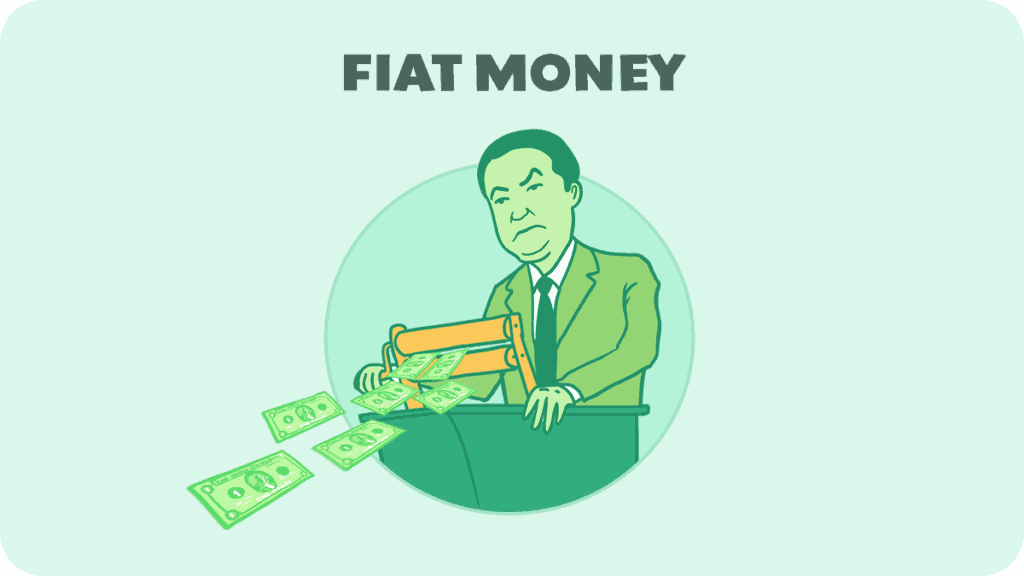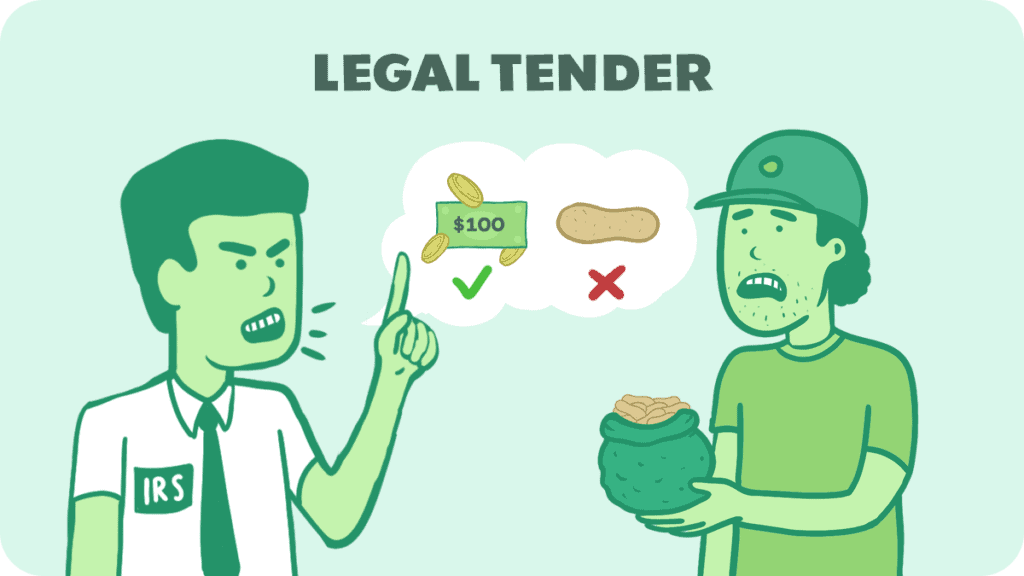Can something become true simply because everyone believes it is so? This may seem like too philosophical a question for an article on financial topics, but that is the basic idea behind fiat money.
In this article, we will briefly explore what fiat money is before examining why it has value.
What is Fiat Money?

Fiat money is money that has no intrinsic value, nor is it backed by anything of intrinsic value. The word fiat means “it shall be,” and fiat money is money issued by the government to be used as money.
Essentially, it is money because the government says it is money and people accept and use it as such. It is backed only by citizens’ faith in the government and belief that the money has value.
Why Does Fiat Money Have Value?
Here it is important to distinguish between intrinsic and extrinsic value.
Intrinsic value means something has value in and of itself. In other words, it would be valuable to possess even if it could no longer be used as money and exchanged for goods and services.
For example, the salt used to pay Roman soldiers had intrinsic value—even if it couldn’t be used in exchange for goods and services, the salt itself would still be valuable.
Extrinsic value is the value placed on the item by others. In the case of fiat money, it has value because other people think it’s valuable.
Though the paper bills or debit cards in your pocket are worthless by themselves, when other people are willing to accept them for goods and services, they become valuable.
Essentially, fiat money has value because the government says it does and people go along with this due to their trust in the government.
Why do People Accept Fiat Money?
Still, an inquiring mind might wonder why people blindly go along with a government decree stating that an otherwise worthless piece of paper is suddenly valuable.
There are several reasons for this, including:
- Habit
- Taxes
- Government spending
- Legal tender
1) Habit
The general acceptance of fiat money might seem less unusual when you consider that most currencies didn’t begin as fiat money. Instead, they were representative money issued by governments and backed by gold.
Gold has been used as money since ancient times and has intrinsic value. Originally, people began to accept these currencies because, though they were not intrinsically valuable, they could be exchanged for something that was.
Eventually, governments needed more money than they had gold and began to issue unbacked currencies or fiat money. This occurred first during times of economic hardship—originally, World War 1, then the Great Depression—and became permanent in 1971.
However, understanding the intermediate step of representative money can help understand the transition from commodity money (money that has intrinsic value) to fiat money (money with no intrinsic value).
At the point the US dollar became fiat money, people had already been using it for generations as representative money. As such, it was already widely circulated. The government simply pulled the commodity backing it.
2) Taxes
As we mentioned, fiat money is issued by governments. Governments have citizens, and these citizens must pay taxes. By demanding these taxes be paid in the currency they issue, the government can guarantee there will be at least some demand for this currency.
Since each citizen will need some fiat money to pay their taxes, they will be more likely to accept it in exchange for goods and services.
3) Government spending
Likewise, when the government pays its employees, purchases goods and services, or makes transfer payments such as welfare or subsidies, it uses the currency it issues. This puts some of the currency in circulation, creating a supply.
Additionally, because you will have a number of people who’ve received this supply of currency and want to spend it, it will encourage others to accept their fiat money as a medium of exchange. Refusing to do so would limit their number of potential customers.
4) Legal tender

You may have seen the writing on the dollar bill that says “This Note is Legal Tender For All Debts, Public or Private.” Have you ever wondered what that meant?
It means that, by decree of the government, that bill can be used to pay anything you owe. We’ve already talked about the government accepting it in taxes; however, you can also use it to pay debts to private citizens, even if they don’t want to accept it as a form of payment.
Though they could still refuse to accept it, simply offering to pay them in legal tender satisfies the debt in the eyes of the nation’s courts. Thus, the debt is absolved and there is no legal way for them to enforce the debt further.
This obviously encourages them to accept the fiat money as payment, thus making it more commonly accepted as money (since the government basically says you have to accept it).
What Determines Fiat Money’s Value?
Now that we’ve looked at why fiat money has value to begin with, we will look at the factors that determine its exact value. As with most things, the value of fiat money is determined by its relative levels of supply and demand.
Domestically, the control of a fiat money’s supply rests solely with the issuer of the fiat money, usually a central bank. By restricting or increasing the amount of money in circulation, the government through its central bank can impact the value of its money. It uses these monetary policies to help guide the economy.
Internationally, a fiat money’s value is determined by its supply and demand relative to other fiat money or currencies. Remember, there is not just one type of fiat money; most nations issue their own fiat money (currency).
For example, there is:
- Japan’s yen
- Britain’s pound
- European Union’s euro
- United States’ dollar
- Canada’s dollar
- Australia’s dollar
- China’s yuan
- Mexico’s peso
These currencies can be traded on currency exchanges. The demand for each currency is determined by a couple of factors.
First, there is the nation’s economy. The stronger the economy, the more people across the world want to buy its products. This increases demand for that currency as people want that nation’s currency in order to buy products from its businesses.
Additionally, there is the stability of the government and the trust people have that a particular government will repay its debts. If people begin to doubt a government’s stability or ability to repay its debts, demand for its currency can drop, decreasing its value.
The supply is determined by the amount of currency in circulation. As we mentioned, governments can increase or decrease the amount of their currency, impacting the supply and, by extension, the value.
Additionally, if people begin to lose faith in a government or an economy is struggling, fewer people will want its currency. This will increase the supply on international exchanges as people look to trade that currency for one that is more stable or producing in-demand products. The result will be a decrease in the value of the currency.
Dangers of Fiat Money
Though fiat money has multiple advantages, particularly giving governments the ability to conduct monetary policy, it does come with dangers. Because it has no intrinsic value, it can quickly become worthless.
The first case is hyperinflation. Since governments can literally print money on demand, there is always the temptation to keep printing more.
This can lead to corrupt or poorly managed governments flooding the market with their currency, causing the currency to become worthless since there’s so much of it going around.
Additionally, if a government collapses or is at risk of collapsing, a fiat currency can become worthless.
Remember, fiat money’s value derives from people’s faith in the government; if there is no faith, there is no value. Contrast this with something like commodity money, which will retain its value even if there is no government backing it due to its intrinsic value.
Conclusion
We hope that this article helped you understand why fiat money has value despite having no intrinsic value of its own.
If you enjoyed this article, please like it and check out our other articles on various topics of financial interest. We look forward to seeing you here again.

